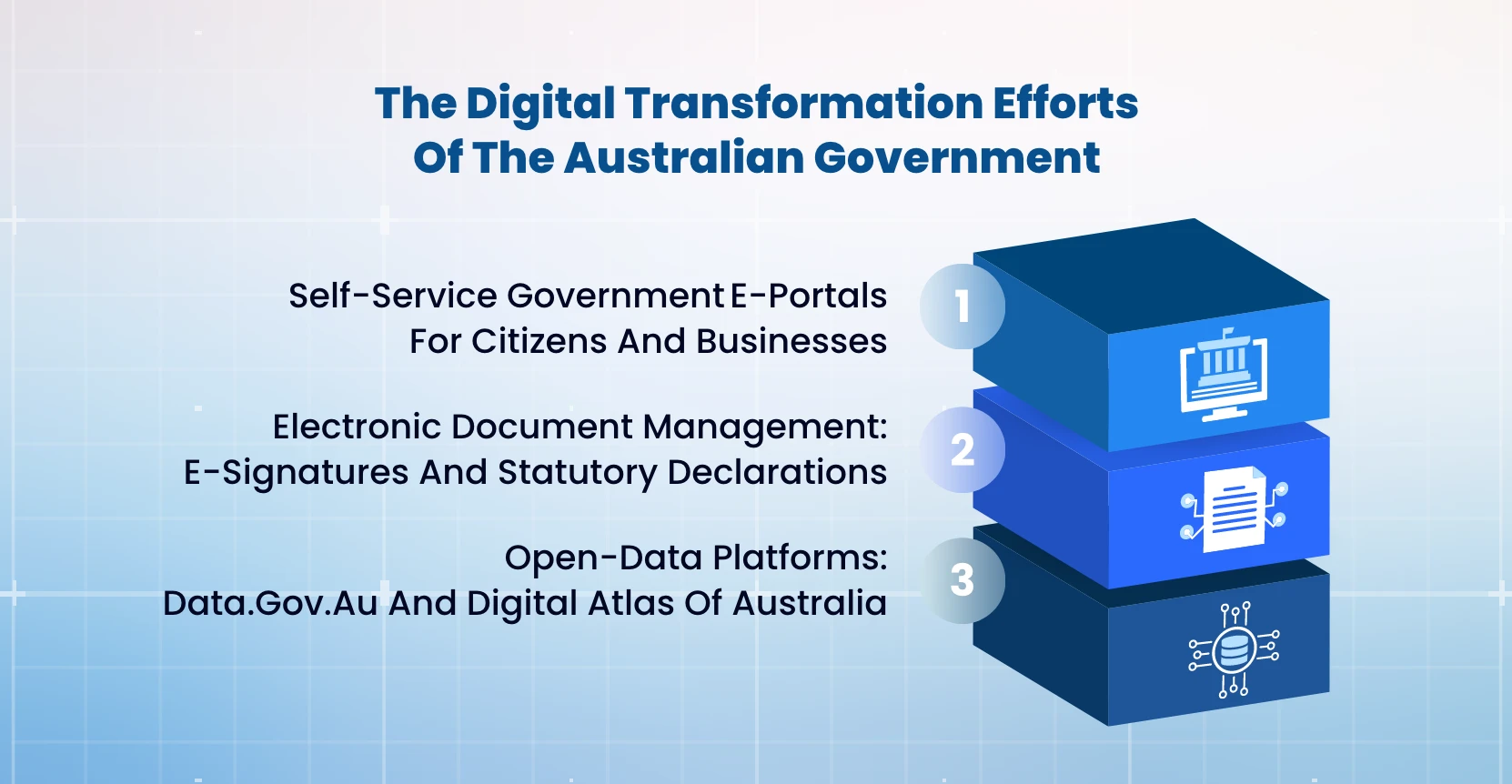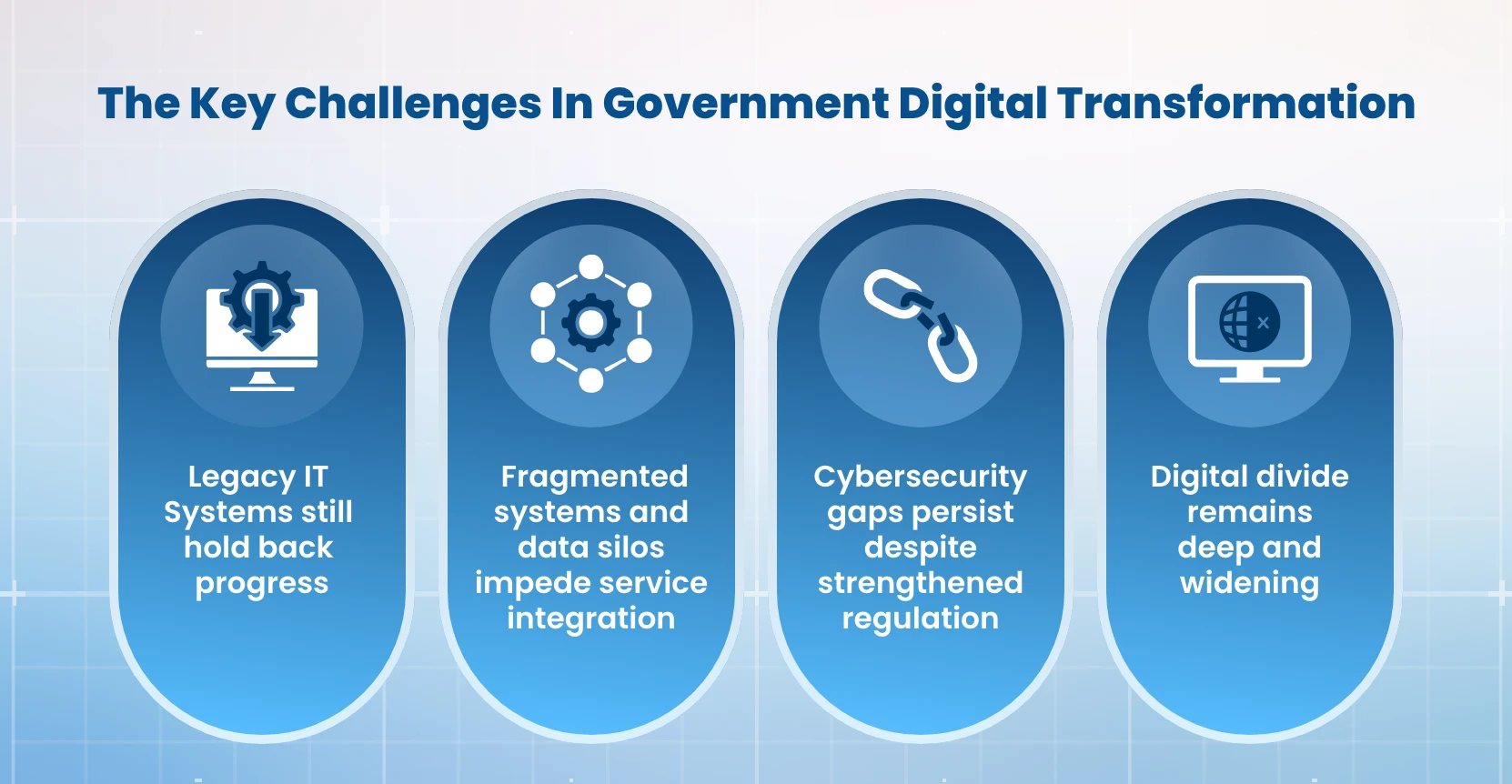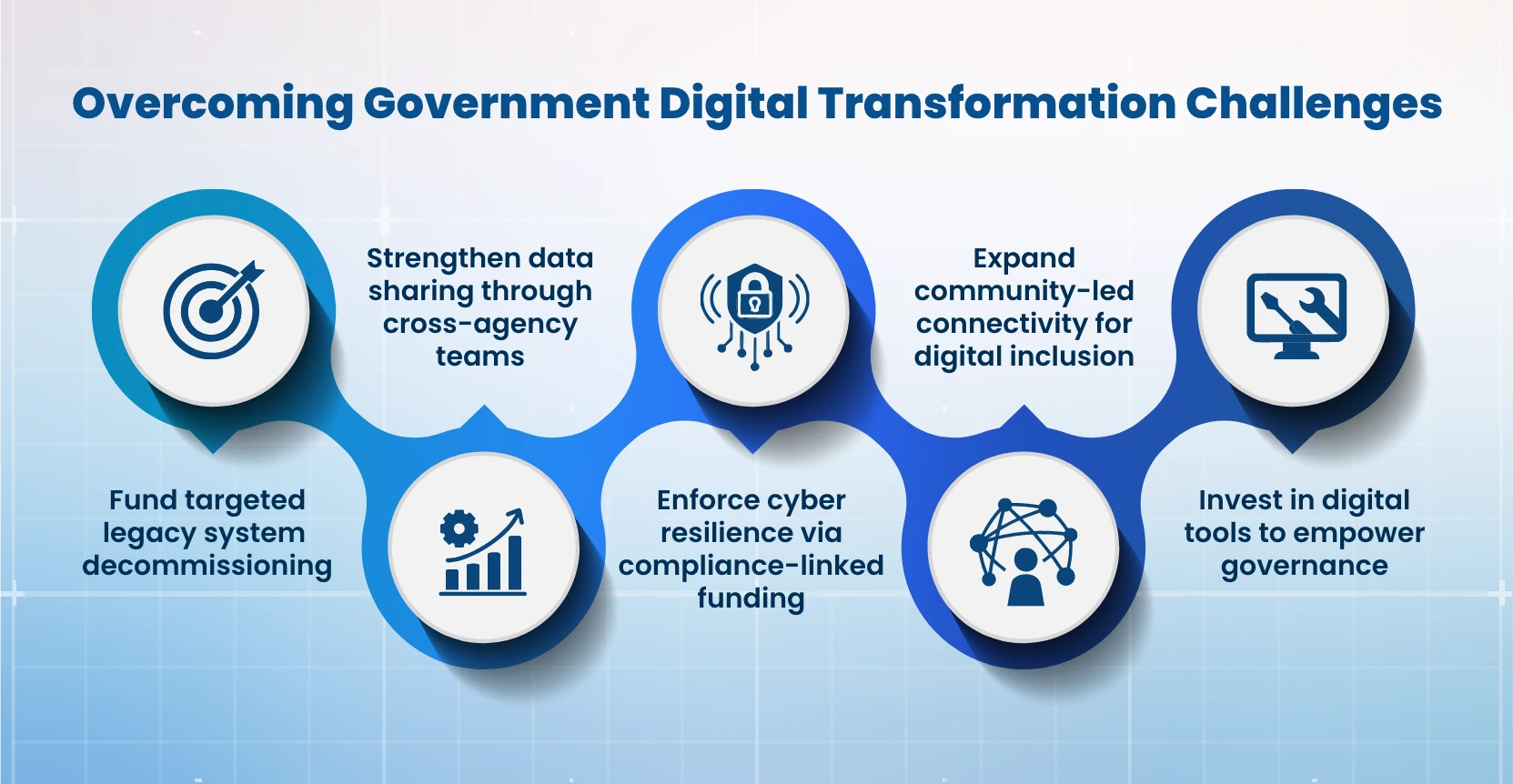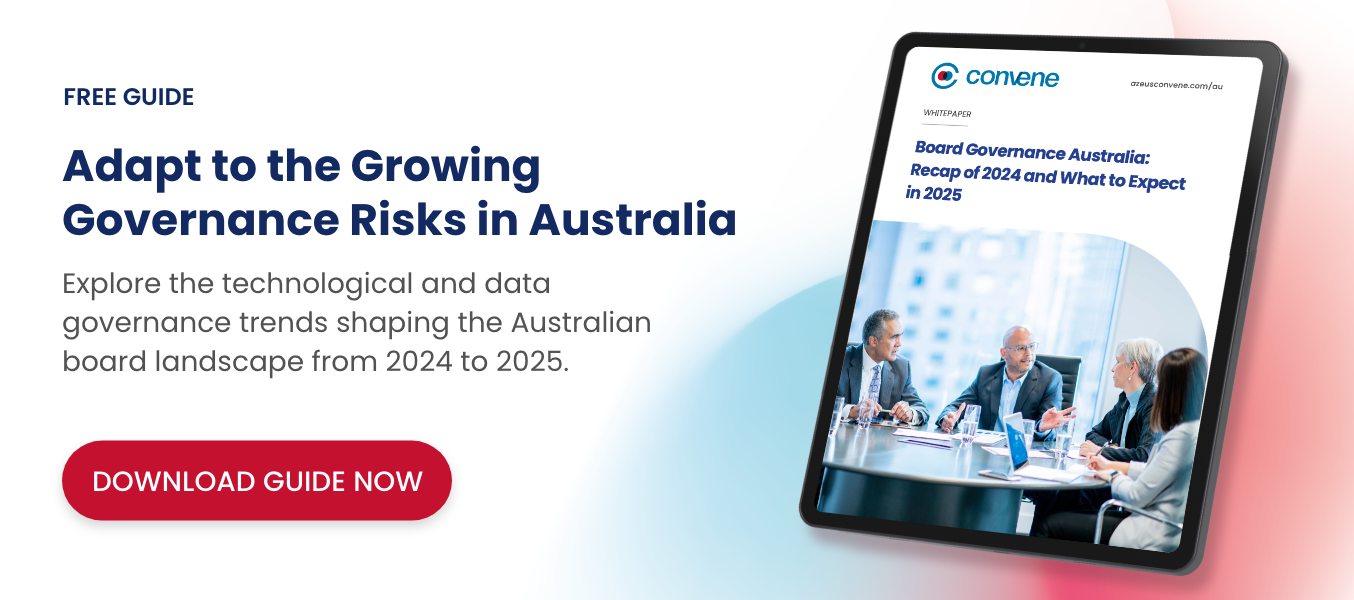With the rapid rise of new technologies, the public sector of Australia is putting more focus on keeping pace with the changes. Lapses, however, are inevitable with some agencies still grappling with issues such as fragmented data, cybersecurity, legacy systems, and digital exclusion. And as digital transformation deepens, so do the technological, structural, and human challenges that the Australian government sector faces.
Desperate to break new grounds, the Australian Government has accelerated reforms to drive broader, economy-wide adoption of digital technology. Since the 2023-24 federal budget, the Government has allocated over $60 million towards cybersecurity support through programmes like Digital Solutions and Cyber Wardens. For its 2025-26 budget, an additional investment of $8 billion will be devoted to renewable energy and low-emissions technologies.
Learn more about the digital transformation efforts of the Australian Government, the challenges they face at present, and how board management software can support this shift.
Why Government Digital Transformation Matters
Digital transformation in government sector, at its core, is fundamentally about respect—for individuals and the use of resources. It aims to amplify citizen engagement, streamline processes, and ultimately, improve public services.
Australia’s 2030 Data and Digital Government Strategy makes it perfectly clear that public services should be “simple, secure, and connected, for all people and business, through world class data and digital capabilities.” And this is not just a mission statement fluff. In 2023, Australia ranked 5th in the OECD Digital Government Index, and scored first (97%) in the ‘digital by design’ category. It also scored highly in the ‘user-driven’ category, which focuses on how effectively the country places the needs and convenience of its people in service delivery.
In Adobe’s 2024 Digital Government Index (DGI) for Australia, data shows that 90% of Australians prefer to interact with public services digitally—which the Government is unable to meet. In 2023, only 79% of service interactions were online. Why does this matter? DGI suggests that the government can save up to $12 billion in service delivery costs over 10 years, and free up 800 million hours—worth $19 billion to the Australian economy—for citizens when accessing services.
That’s why digital is not optional. It is central to rebuilding a more responsive, inclusive public service, and tackling long-standing gaps in access and efficiency.
What are the digital transformation efforts of the Australian Government?
The Government is currently responding to the growing public demand for faster, online-ready services. Among its digital transformation Australia efforts are:
 Self-Service Government E‑Portals for Citizens and Businesses
Self-Service Government E‑Portals for Citizens and Businesses
Australia’s myGov portal has evolved far beyond its 2013 origins. Under the Government’s 2024 Implementation Plan, the Data and Digital Government Strategy now enables users to complete statutory declarations, apply for passports, and manage benefit claims online—saving weeks of processing time. Additionally, NSW’s OneCX Program upgraded the state portal, leading to a 180% rise in content engagement and smarter navigation.
These improvements are not just superficial improvements. With the majority of Australians opting for digital transactions, such upgrades can help establish faster public service delivery, and even easier access for citizens and businesses across Australia.
Electronic Document Management: e‑Signatures and Statutory Declarations
Australia is phasing out ‘wet-ink’ processes. Post-COVID reforms pushed statutory declarations and deeds to be lodged digitally via myGov. This was underpinned by secure e-signature technology, Digital ID verification, and legislative updates that took effect in January 2024—the new digital statutory declaration service.
In its first five months, the new system handled over 22,000 digital statutory declarations, saving Australians around $2 million (expected to generate greater savings in the future). By August 2024, more than 34,000 digital statutory declarations had been completed online, with an average completion time of just 4 minutes.
Such digital document initiatives not only streamline citizen-facing processes, they also create efficiencies across government. Ultimately, this leads to fewer paper-based bottlenecks, and less manual data entry.
Open‑Data Platforms: Data.gov.au and Digital Atlas of Australia
Open-data services have expanded exponentially. As of writing (2025), data.gov.au remains as Australia’s central open-data source, hosting hundreds of thousands of datasets. Another significant initiative is the Digital Atlas of Australia, a centralised geospatial platform designed to combine national datasets across Australia. By August 2024, it collected 170+ datasets and attracted around 59,000 unique users, including over 700 registered government stakeholders.
These platforms highlight the growing importance of open data in driving transparency and innovation across Australia. And by making government-held data accessible at scale, the nation is redefining the relationship between government, technology, and the public.
What are the key challenges in government digital transformation?
In Australia’s bid to modernise public services, technology rollout continues at pace—but it’s not without growing pains. From aging IT systems to digital exclusion, the transformation effort is encountering several stubborn obstacles.
 1. Legacy IT Systems still hold back progress
1. Legacy IT Systems still hold back progress
Some government systems across Australia remain anchored in outdated technology. According to the Australian National Audit Office (ANAO), over 78% of Commonwealth entities did not have appropriate IT systems to monitor user access. Hence, indicating deep-rooted, systematic issues with legacy infrastructure.
In its 2023-24 interim audits, ANAO found that departments, such as the Australian Taxation Office (ATO), the Department of Defence, and Services Australia, all struggle with IT control deficiencies. This primarily concerns the failure to properly enforce the removal of user access from their systems. That’s why it’s critical to create IT governance controls supported by clear policies aligned with privacy principles.
The reliance on legacy platforms can be both risky and costly. For instance, the Northern Territory’s Acacia project, launched to replace six outdated legacy health systems with an initial budget of $259 million, faced criticisms for its troubled rollout. The project’s first rollout phase was poorly executed that led to a direct threat to patient safety and caused the budget to balloon to $320 million, as of 2025. This case is a cautionary tale of what can happen when governments leap from legacy infrastructure to modern systems without a staged transition.
2. Fragmented systems and data silos impede service integration
Despite efforts to centralise digital services like myGov, backend systems remain fragmented. A 2024 Public Sector Network survey found only 11% of public servants report seamless data access across agencies, while 33% cite silos as a major obstacle. Outdated APIs, inconsistent data standards, and jurisdictional barriers hinder truly integrated service delivery.
This fragmentation often results in duplicated efforts and inconsistent citizen experiences. For example, users navigating Centrelink, Medicare, and Child Support services through myGov experienced an outage in 2024. Hundreds were unable to access the government services, leaving users unable to report income or seek payments when needed.
3. Cybersecurity gaps persist despite strengthened regulation
Despite Australia’s landmark reforms under the Cyber Security Act 2024, compliance and enforcement issues still remain. Enacted last November 2024, the Act now mandates ransomware reporting within 72 hours, enabling a more coordinated response to cyber threats.
Reforms also involve the establishment of a Cyber Incident Review Board (CIRB) to assess major cyber incidents. These aim to help the Australian Government in managing critical infrastructure during disruptions and expanding information-sharing between the government and industry.
In March 2025, a formal ban was issued to remove Russian-developed Kaspersky antivirus software from all federal government devices. This is due to “a detection of its use in the supply chain of one government agency,” revealing inadequate vendor risk controls and reactive risk management.
4. Digital divide remains deep and widening
The 2024 RMIT “Mapping the Digital Gap” report highlights a stark digital divide in Australia’s remote and very remote First Nations communities. Data shows that over two-thirds of surveyed First Nations individuals in these areas are struggling to afford internet access, a striking increase from 40% in 2022. Such financial strain forces nearly 70% of respondents to sacrifice essentials just to afford connectivity.
With nearly 24% of Australians digitally excluded or highly excluded, the divide can significantly limit opportunities in health, education, employment, and even civic participation. This calls for stronger national coordination and targeted subsidies to ensure no community is left behind in Australia’s digital journey.
How to Overcome Government Digital Transformation Challenges
While Australia has made measurable progress, the digital path ahead requires sharper focus and more agile tactics. Below are some strategies that can help government agencies address the most pressing challenges.

1. Fund targeted legacy system decommissioning
ANAO’s 2023-24 performance audits found persistent weaknesses in IT governance across Australian Government entities, with many lacking adequate change-management controls and system oversight. Separately, a 2024 audit by the Australian Digital Health Agency found poor procurement planning and management of the My Health Record, raising alarms about integration failures and system readiness.
What to do:
Create a dedicated “Legacy Exit Fund” to co-invest in high-risk, outdated systems—focusing on health, aged care, and infrastructure platforms that pose significant service or financial risks. A focused investment fund would help agencies plan safer migrations, reduce scope creep, and align legacy replacements with the national Digital Service Standard 2.0 and Investment Oversight Framework by Digital Transformation Agency.
2. Strengthen data sharing through cross-agency teams
A 2024 Appian survey of 425 public servants found that just 11% reported being able to easily access data across agencies, while 33% said data fragmentation frequently hindered their work. In addition, the backend interoperability of myGov remains weak, hindered by inconsistent data standards and outdated APIs.
What to do:
Launch short-term, multidisciplinary project teams—”digital cells”—composed of staff from key agencies such as Centrelink, Medicare, and the ATO. These teams would work across silos to enhance data access, modernise legacy APIs, and align privacy frameworks. This enables faster testing and scaling of systems and delivering more consistent, citizen-centric experiences.
3. Enforce cyber resilience via compliance-linked funding
Australia’s Cyber Security Bill 2024 introduced mandatory reporting and governance frameworks. Yet, reports show banned software like Kaspersky is still in use, suggesting compliance is not system-wide. Meanwhile, in its 2023–24 Annual Cyber Threat Report, the Australian Signals Directorate recorded over 1,100 cybersecurity incidents, with around 71% of incidents involving ransomware.
What to do:
Implement a compliance-lined cyber funding model that conditions federal cybersecurity grants. This would require organisations to meet measurable benchmarks, such as passing annual independent audits, conducting regular cyber incident simulations, and demonstrating patching and vulnerability management.
4. Expand community-led connectivity for digital inclusion
One report revealed that mobile black spots continue to impact the majority of Australia’s remote and very remote communities. Out of 1,505 identified locations, 796 still lack any mobile service, leaving more than half of these communities without basic connectivity.
What to do:
Scale up community-owned broadband and mobile initiatives, particularly in remote and Indigenous regions, using local co-investment models and digital literacy programmes. The NBN Co partnership in regions like Koonibba shows community broadband can be transformative—enabling remote education and business access. Scaling similar projects, coupled with micro-grants and literacy training, would help close the digital divide in an evidence-based, community-sensitive way.
5. Invest in digital tools to empower governance
Government spending is shifting markedly towards software solutions. Gartner forecasts Australia’s IT spending will exceed $147 billion in 2025, an increase of 8.7% from last year. This projected increase is linked to the continued investment in cybersecurity, generative AI, and cloud technologies.
What to do:
Expand the use of specialised digital tools and platforms (e.g. board management software, collaboration suites, and automated decision-support systems) across government agencies.
Such investments present opportunities for tailored tools designed to improve governance workflows. For instance, board portals can streamline document distribution, meeting scheduling, board benchmarking, and minute-taking—greatly reducing manual admin overhead and enhancing transparency.
Convene: One Step to Government Digital Transformation
Across Australia, many government agencies still face hurdles in their digital transformation journey. Challenges like outdated legacy infrastructure and inconsistent data-sharing frameworks can significantly hinder progress. At governance level, some may face inefficient meeting processes and poor document version control. This makes it harder for public bodies to operate securely and transparently. This is where Convene comes in.
As a top-rated board management software, Convene offers a suite of powerful tools, designed with public sector governance in mind. It simplifies how Australian government sector agencies prepare, conduct, and follow up on meetings—streamlining collaboration while maintaining compliance with government security standards. Users can expect:
- Secure Document Sharing and Access Controls — Protect sensitive information with Convene’s enterprise-grade encryption and granular user permissions, critical for public bodies handling confidential material.
- Paperless Meeting Packs and Agenda Builder — Easily compile and distribute meeting packs and create meeting agendas in a secure online portal, reducing administrative overhead.
- Audit Trails and Compliance Reporting — Maintain transparency with full audit logs and compliance-ready records that meet public sector governance and accountability requirements.
- Digital Signature Integration — Expedite approvals and streamline document execution with Convene’s integrated e-signature solutions like DocuSign, Adobe Sign, and more.
- IRAP-Certified Security Assurance — Ensure compliance with government cybersecurity standards and secure handling of classified information with Convene’s IRAP Certification.
Ready to take the next step toward modern governance? Book a demo now and learn more about Convene.
Jielynne is a Content Marketing Writer at Convene. With over six years of professional writing experience, she has worked with several SEO and digital marketing agencies, both local and international. She strives in crafting clear marketing copies and creative content for various platforms of Convene, such as the website and social media. Jielynne displays a decided lack of knowledge about football and calculus, but proudly aces in literary arts and corporate governance.





